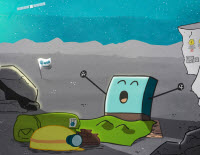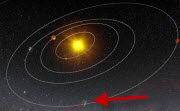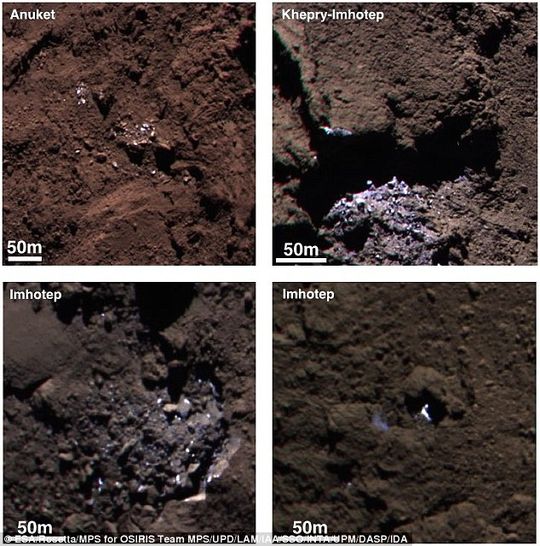 And here’s some more fantastic news, Rosetta's lander Philae has woken up after seven months in hibernation on the surface of Comet 67P/Churyumov-Gerasimenko, and by all acounts ‘is doing very well’.
And here’s some more fantastic news, Rosetta's lander Philae has woken up after seven months in hibernation on the surface of Comet 67P/Churyumov-Gerasimenko, and by all acounts ‘is doing very well’.
The signals were received at ESA's European Space Operations Centre in Darmstadt at 22:28 CEST on 13 June. For 85 seconds Philae "spoke" with its team on ground, via Rosetta, in the first contact since going into hibernation in November.

Rosetta on 01-Jul-2015
Inside orbit of Mars
When analysing the status data it became clear that Philae also must have been awake earlier: Scientists are now waiting for the next contact as there are still more than 8000 data packets in Philae’s mass memory which will give the DLR team information on what happened to the lander on the comet. Meanwhile the adventure continues as ESA have confirmed that its Rosetta mission will be extended until the end of September 2016, at which point the spacecraft will most likely be landed on the surface of Comet 67P.
By then as the comet moves far away from the Sun again, there will no longer be enough solar power to run Rosetta’s set of scientific instrumentation efficiently. Comet 67P/Churyumov-Gerasimenko will make its closest approach to the Sun on 13 August and Rosetta has been watching its activity increase over the last year.

ESA has repleased the first pictures of possible ice on Comet 67P, taken by Rosetta
spacecraft in Sept-2015. Rosetta has found more than 100 patches
that could be water-ice, according to analysis of images from the probe.
Continuing its study of the comet in the year following perihelion will give scientists a fuller picture of how a comet’s activity waxes and wanes along its orbit. If Rosetta does land on the comet’s surface it is unlikely to be able to continue operations and relay data back to Earth, bringing to an end one of the most successful space exploration missions of all time.
Image Credits: ESA
- Log in to post comments
